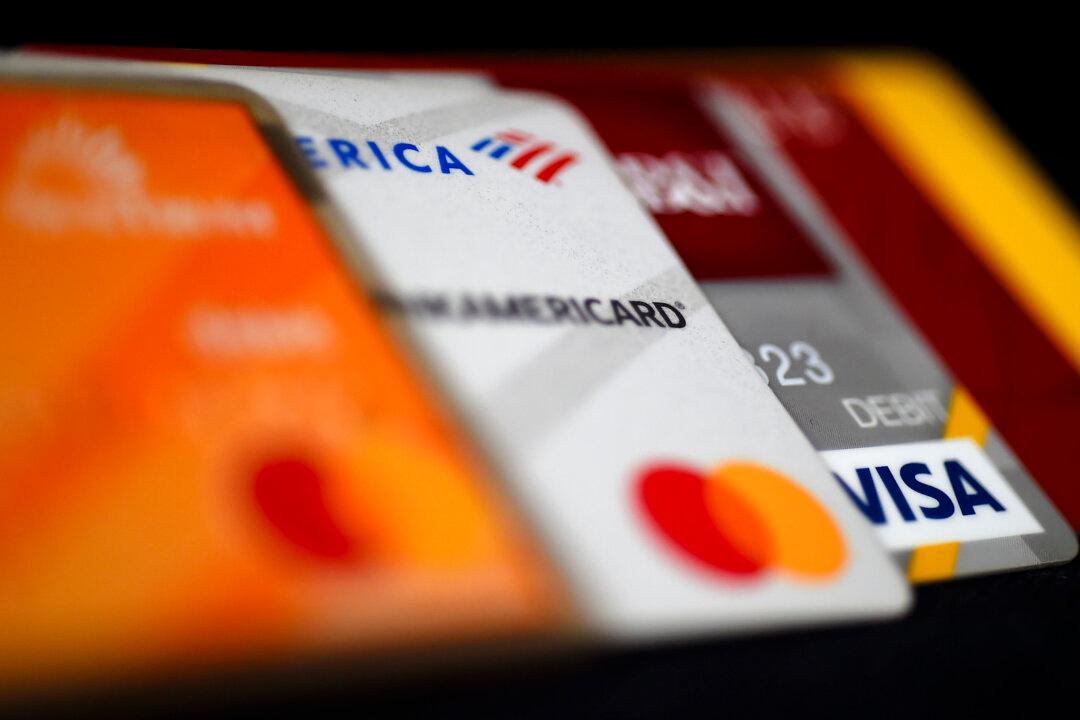U.S. households took on more debt in the second quarter, but overall delinquency rates stabilized from the previous three-month period, suggesting that consumers could still prop up the national economy, according to the Federal Reserve Bank of New York.
In the three-month period ending in June, mortgage debt surged by $77 billion, to a record $12.52 trillion.
Credit card debt reached an all-time high of $1.142 trillion, up $27 billion from the previous quarter and $111 billion from the same time a year ago.
Auto loan debt rose $10 billion, to $1.626 trillion, another record. This is up $44 billion from last year.
The regional central bank reported that student loan debt fell by $10 billion, to $1.585 trillion, driven by the federal government’s forgiveness program.
Homeowners tapped into home equity lines of credit (HELOC) in the April–June period, highlighting the demand for an alternative to refinancing amid higher mortgage rates, says Andrew Haughwout, director of Household and Public Policy Research at the New York Fed.
“The volume of mortgage originations remained low, primarily due to subdued refinancing activity.” said Haughwout in an Aug. 6 statement. “Homeowners continued to increase HELOC balances as an alternative way to extract home equity.”
HELOC debt advanced $4 billion, or 10 percent, to $380 billion. This was the ninth straight quarterly jump since the first quarter of 2022.
The 30-year fixed-rate mortgage had topped 7 percent during the second quarter before falling to as low as 6.73 percent for the week ending Aug. 1.
Overall household debt levels have surged $3.7 trillion since the end of 2019 before the start of the coronavirus pandemic.
While aggregate delinquency rates stabilized from the previous quarter, delinquency transition rates for auto loans, credit cards, and mortgages ticked higher.
Flow into serious delinquency (90 days or more delinquent) surged for credit card debt, rising from 5.08 percent in the second quarter of 2023 to 7.18 percent in the second quarter of 2024. The serious delinquency rate also swelled for auto loan debt and mortgage debt, rising to 2.88 percent and 0.95 percent, respectively.
The report also hinted at growing consumer bankruptcy concerns.
State of Consumer Debt
Real (inflation-adjusted) consumer debt is higher than its previous peak during the Great Recession of 2008–09, Kansas City Fed economists wrote in a May 2024 paper.The sizable jump has been largely fueled by growing credit card debt.

Despite higher debt levels and delinquency rates, “debt-to-income measures remain historically low, suggesting that consumers in aggregate may have more room to run up debt before experiencing further financial stress,” they said.
“Although delinquency rates have risen, they would likely be higher if the debt-to-income ratio were not so low, indicating that consumers have income to cover their debt obligation,” the staff economists stated.
“If growth in personal income keeps pace with debt, consumers will likely continue to borrow.”
When adjusted for inflation, U.S. households added $5 billion “to break a streak of four consecutive years with declining household debt from Q1 to Q2,” says John Kiernan, the editor of personal finance resource WalletHub.
“Increasing debt, stubborn inflation and record high interest rates give consumers a lot of headwinds as we try to navigate the third and fourth quarters of the year, when we traditionally rack up the most debt,” he said.
Conditions have dramatically changed since 2020, says Ted Rossman, the senior industry analyst at Bankrate.
“Credit card balances briefly fell in 2020 and early 2021 due to pandemic-related factors—for example, many Americans used government stimulus funds to pay down debt and most people spent less because activities such as travel, dining out and live entertainment were greatly curtailed,” Rossman stated. “But since early 2021, credit card balances have rocketed upward by 48%, fueled by a post-pandemic boom in services spending as well as high inflation and high interest rates.”
Market watchers have paid close attention to consumer spending—which powers about two-thirds of the U.S. economy—in a climate of higher interest rates. Even in this environment, consumer spending has remained solid over the last few years.
But the so-called “vibecession”—a term that describes the disconnect between the public’s pessimistic view of the economic landscape and the actual economy’s health—persists. Consumers’ negative outlook has remained the same for much of the year, according to various sentiment surveys.
“Confidence increased in July, but not enough to break free of the narrow range that has prevailed over the past two years,” said Dana Peterson, chief economist at The Conference Board, in a statement. “Even though consumers remain relatively positive about the labor market, they still appear to be concerned about elevated prices and interest rates, and uncertainty about the future; things that may not improve until next year.”







